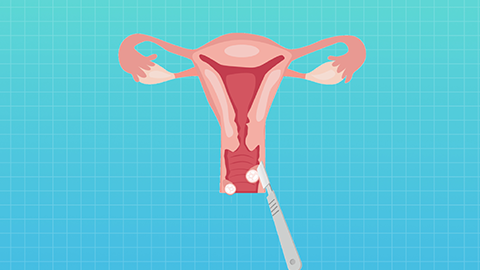How is adenomyoma of the uterus caused?
Generally, the main causes of adenomyosis include hormonal imbalance, fertility-related factors, endometritis, endometrial polyps, and uterine adhesions. If discomfort symptoms occur, it is recommended to seek timely diagnosis and treatment at a regular hospital. Detailed analysis is as follows:
1. Hormonal Imbalance
Excessively high estrogen levels and relatively insufficient progesterone in women can stimulate excessive proliferation of the endometrium and its invasion into the uterine muscular layer, gradually forming adenomyosis. It is important to maintain a regular lifestyle, avoid staying up late, reduce intake of high-estrogen foods, and take medications such as dydrogesterone tablets, ethinylestradiol cyproterone acetate tablets, or gestrinone capsules under a doctor's guidance to regulate hormones and inhibit endometrial proliferation.

2. Fertility-related Factors
Multiple pregnancies, deliveries, or induced abortions can damage the uterine muscle layer, making it easier for the endometrium to invade the muscular layer and increasing the risk of adenomyosis. Those without fertility needs should take contraceptive measures to avoid unintended abortions; those planning pregnancy can prepare scientifically under a doctor's guidance and pay attention to postpartum uterine recovery.
3. Endometritis
Bacterial infection causing inflammation of the endometrium can lead to long-term inflammation that damages the barrier between the endometrium and the uterine muscle layer, resulting in endometrial invasion into the muscular layer and triggering adenomyosis. Under a doctor's guidance, medications such as metronidazole tablets, levofloxacin hydrochloride capsules, or traditional Chinese medicine like Fuke Qianjin tablets can be taken to control infection, repair the endometrial barrier, and reduce the risk of adenomyosis.
4. Endometrial Polyps
Localized excessive proliferation of the endometrium forms polyps, which may disrupt the normal structure of the endometrium, interfere with the uterine environment, increase the risk of endometrial invasion into the muscular layer, and subsequently cause adenomyosis. Small polyps can be monitored regularly, while larger or symptomatic ones can be treated with hysteroscopic endometrial polypectomy. After surgery, progesterone capsules can be taken under a doctor's guidance to prevent recurrence and improve the uterine environment.
5. Uterine Adhesions
Uterine cavity procedures may lead to adhesions, which can hinder normal shedding of the endometrium, making it prone to grow into the uterine muscle layer and induce adenomyosis. Mild adhesions may be treated with estradiol valerate tablets under a doctor's guidance to promote endometrial repair; moderate to severe adhesions require hysteroscopic adhesiolysis.
In daily life, it is important to maintain external genital hygiene and avoid unclean sexual activity; maintain a regular diet, balanced nutrition, and avoid abusing hormone-containing health products; maintain a positive mindset and avoid prolonged emotional fluctuations; and undergo regular gynecological examinations to promptly detect and treat gynecological conditions, maintaining uterine health.






